Lesson Modules
Teaching Tips:
Using the KT06 Cubelets, 60-minute activity
Students of all ages enjoy creative problem-solving. Whether working alone or in groups, children and adults in classes, teams, and camps become excited when tasked with creating, solving, or competing. Cubelets offer a great platform to present challenges and engage students of many ages and levels on using their expertise to creatively answer a range of challenges about robotics, reasoning, and design.
For each challenge, this activity includes 3 parts that are 20 minutes each:
- “Warm‐up” challenges and easier puzzles
- Additional Cubelets challenges to tackle harder problems or add more Cubelets
- Capstone challenges that use more Cubelets or combine previous challenge elements
If your class, camp, or club has less than 60 minutes, we suggest using each part as a single activity on consecutive class days.
These activities have no suggested age levels because different challenges may appeal to different groups depending on the objectives of your class, camp, or club. Most students who are new to building with Cubelets will have more initial success and gain more understanding by starting with a single sense (black Cubelet) single Action (clear Cubelet) robots. This can be done separately or can use the exercises presented in Cubelets challenges, Part 1 (this activity).
Special note: Possible solutions to these challenges are pictured but there are many solutions to every challenge. These pictures aren’t meant to limit you or your students. They are here to get you started!
Introduce each group to Cubelets challenges
Tell the class: “Today we’re going to try and problem-solve using these Cubelets to build robots. Robots are devices that can sense, think, and act. Black Cubelets have senses, like our eyes and ears. Clear Cubelets are the action parts of the robots that do things. Colored Cubelets are the thinking or logic parts of the robot. The first challenges we
work on will help you practice how sense, think, and act work together to make a robot. All of our challenges will be aimed at thinking about building something to meet a need, solve a problem, or make something that can help us do or understand something. “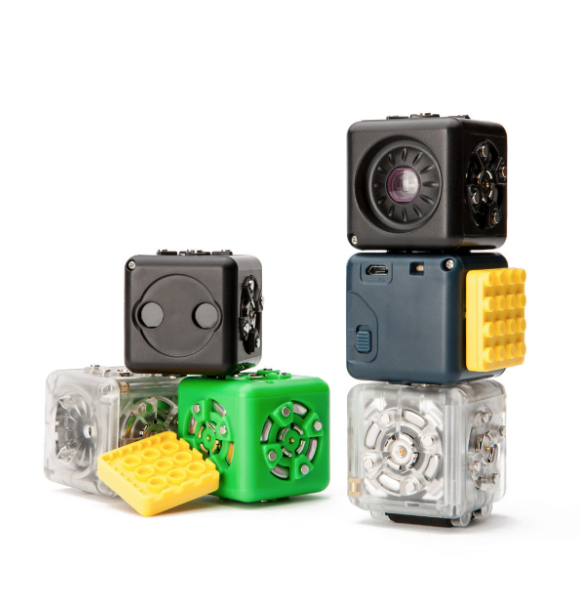
Today we will build robots!

Let's remember that robots are devices that can sense, think and act.
Black Cubelets have senses, like our eyes and ears.
Clear Cubelets are the action parts of the robots that do things.
Colored Cubelets are the thinking or logic parts of the robot.
All these three, sense, think, and act can work together to make a robot.
Teaching Tips:
Materials: KT06 kits, groups of 14 students using each kit.
- First ‐ Students use the Battery, Brightness and Flashlight. “At first, build robots using just this sense and this action. How many different ways can you build using these three blocks? Try to make the light shine more or less by changing the input to the sense.”
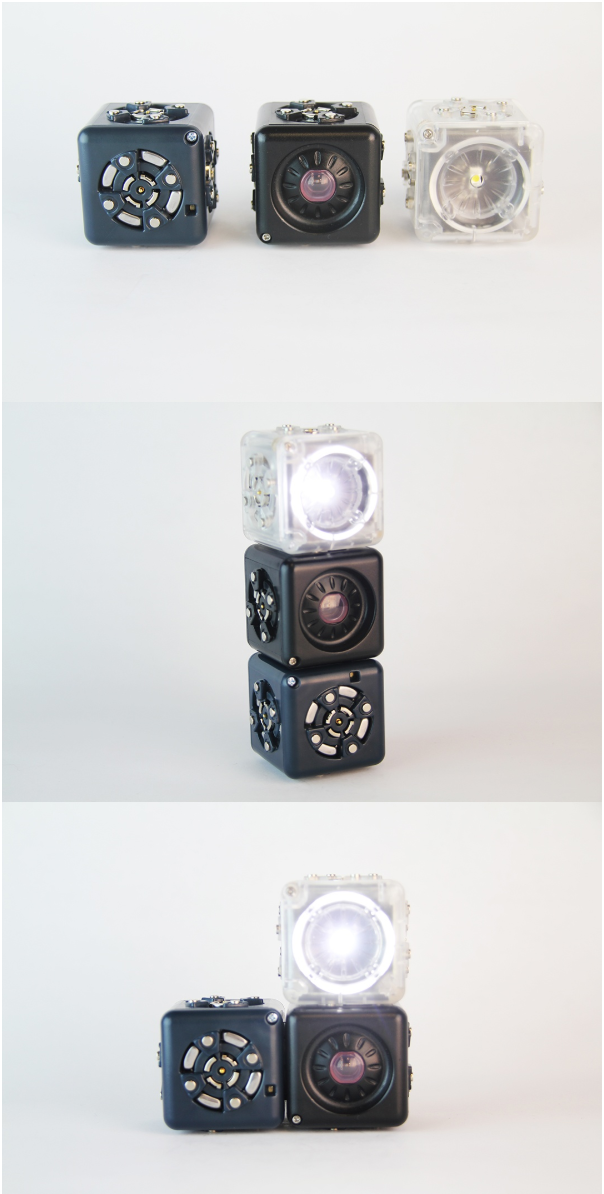
- Students now switch the Distance sense without knowing the input to this sense. “What do you think this robot is sensing? Can you find out if this robot senses its environment by trying different inputs for this sense? “
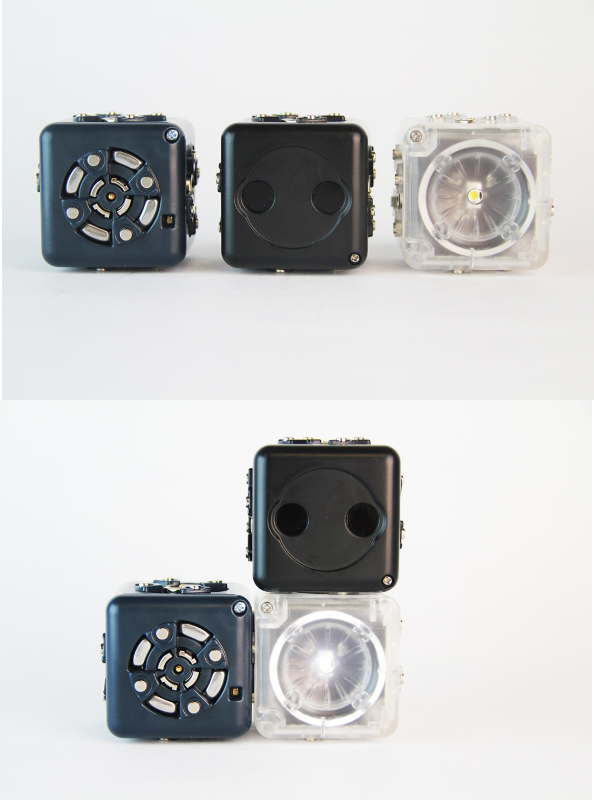
- Now that you have an idea about what this Cubelet is sensing, can you design a robot using this sense that would create an action to help people or do a job?
Explain how it would work thinking about what inputs and outputs it has.
What job or purpose could it have? (e.g. a motion‐activated light that can protect my diary)
Today we are going to build a robot! A robot has senses, like our eyes and ears. It can also do things or simply just think.
Let's review how it works!
- First ‐ Use the Battery (Gray), Brightness (Black), and Flashlight (White).
How many different ways can you build using these three blocks?
Try to make the light shine more or less.

- Now switch the Distance sense without knowing the input to this sense.
What do you think this robot is sensing?

- Now that you have an idea about what this Cubelet is sensing, can you design a robot using this sense that would create an action?
Discuss it in your group:
What inputs and outputs does the robot have?
What job could it have?
Teaching Tips:
These final challenges help students synthesize what they’ve learned about sense‐act robots so they can build robots that meet stated criteria or display specific behavior.
Materials: KT06 kits, using the Battery, Distance, and Drive Cubelet initially, and then adding the Passive Cubelet. Groups of 14 students using each kit.
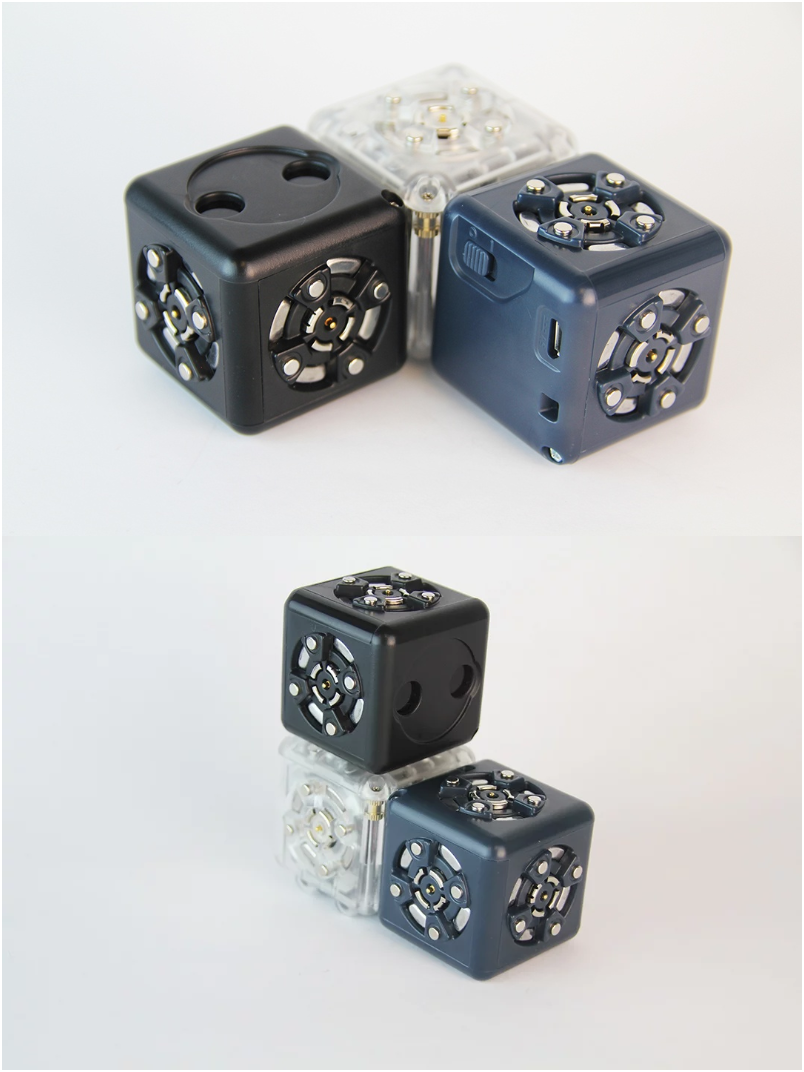
Still using ONLY these three Cubelets, “How many more driving robots can you make if you build using nonlinear configurations? How many new kinds of movement or behavior can your robot produce?”Other driving challenges include:
- Make a robot that is “aggressive” and drives faster as it gets close to something Make a robot that is “afraid” and drives away from things
- Make a robot that is “confused” and drives in circles
- Make a robot that lets you “use the force” to control it with your hand What kind of robot is hard to drive with only these three Cubelets? (Hint: A “tower” or “tall” robot with the wheels of the Drive Cubelet face down)
- Discuss with your peers what you would need to make that robot work.
Add the Passive Cubelet to your driving robots. What new constructions are possible now?
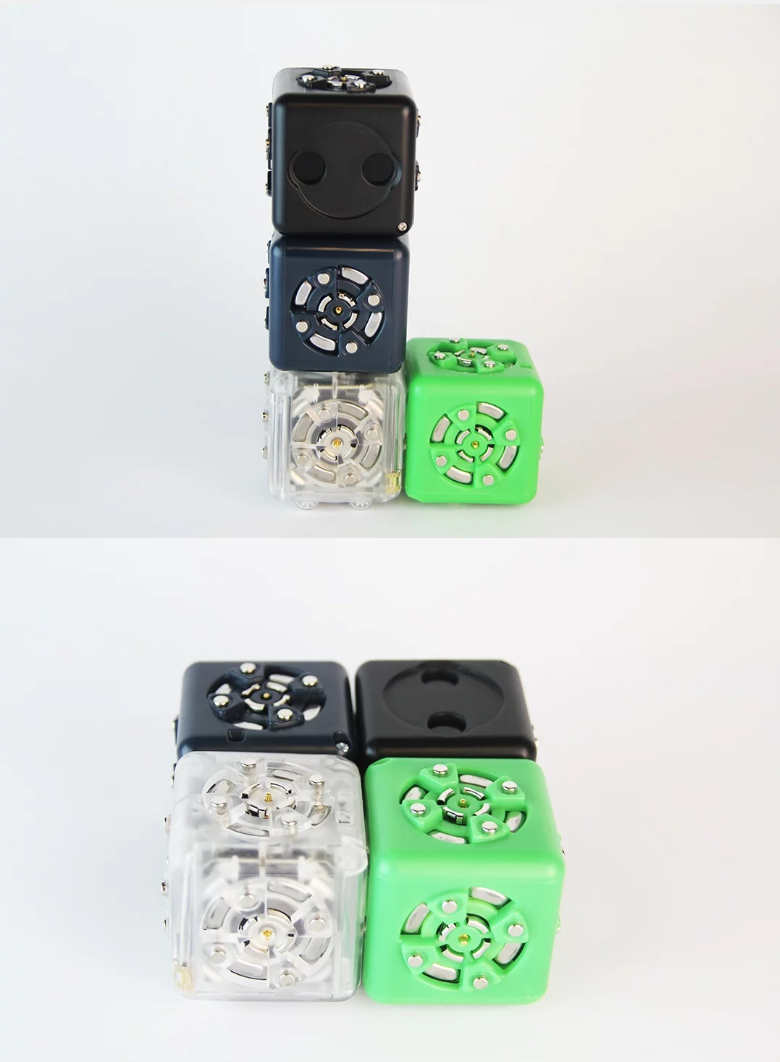
Try to create a robot that drives!
Discuss in your group:
- What happens if you add sensors?
- Can the car drive around your table?
Now a final challenge!

Still using ONLY these three Cubelets,
How many more driving robots can you make?
Try these driving challenges:
- Make a robot that is “aggressive” and drives faster as it gets close to something.
- Make a robot that is “afraid” and drives away from things.
- Make a robot that is “confused” and drives in circles.
- Make a robot that lets you “use the force” to control it with your hand.
- What kind of robot is hard to drive with only these three Cubelets? (Hint: A “tower” or “tall” robot with the wheels of the Drive Cubelet face down)
- Discuss with your peers what you would need to make that robot work.

